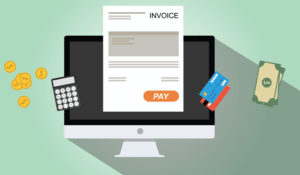Content

As we have seen, the more time we have to solve a problem, the more likely we can affect the outcome. Early-stage businesses will often raise money in phases to fund different stages, so it’s important to highlight how long the company can last until it needs more money. Typically, an investor may negotiate a clause in a financing deal to reduce staff or compensation if a company is experiencing a high burn rate. Layoffs often occur in larger start-ups that are pursuing a leaner strategy or that have just agreed to a new financing deal.
- Also, 4.17% of our cost budget would be $700.56 and 4.17% of our labor-hours budget would be 20 hours.
- We title this row “Actual Hours.” If you’re manually generating your spreadsheet, this row is where you’ll enter in the sum of all your time logs for the project your tracking.
- This influences which products we write about and where and how the product appears on a page.
- A rapid pace of burn is not necessarily a negative sign, since the start-up might be operating in a very competitive industry.
- Thankfully, there is a reliable process for gauging financial progress so that project managers can make effective decisions before issues arise – project burn rate.
The general recommendation is for a startup business to have six to 12 months of expenses on hand. If the company has $100,000 in the bank, a good burn rate would fall between $16,667 (six months) and $8,333 (12 months). If the burn rate begins to exceed its forecast, or if revenue fails to meet expectations, the usual recourse is to reduce the burn rate, regardless of how much money is in the bank. This requires rethinking the startup’s cost structure and usually means reducing staff and/or other major cost drivers, such as office lease, technology, and marketing. Although it can be uncomfortable to face the reality of a high burn rate (and a short cash runway), it is much better to know these metrics in your business and address them before they become a problem.
How to Calculate Burn Rate?
It also offers powerful reporting tools that allow users to monitor progress in real-time as well as gain insights into their projects’ performance over time. With its comprehensive features, Project Burn makes it easy for teams of all sizes to stay organized while ensuring successful completion of projects on time and within budget. The combination of both understanding your project burn rates and being able to make effective decisions that keep your projects financially viable changes the entire future of a business. Burn rate in design is the rate at which a company spends its available funds on projects. It is calculated by taking the total amount of money spent on projects over a certain period of time and dividing it by the total amount of money available for spending during that same period.

That means calculating burn rate which is a good one will be around one-twelfth of your available cash. If you have $600,000 in available cash, for instance, a burn rate close to $50,000 would be quite good. They “burned” the same amount of costs and hours, but “earned” substantially more than on day one. Since we installed 125 LF, we completed 4.17% of the work (125 feet out of our total of 3,000). Also, 4.17% of our cost budget would be $700.56 and 4.17% of our labor-hours budget would be 20 hours. However, if you want the net burn rate, you must also factor in whatever revenue the company may be generating.
Sample EV PMP® Certification Exam Questions
It also provides insight into a company’s cost drivers and efficiency, regardless of revenue. The burn rate represents the speed at which an unprofitable company consumes its cash reserves. In the case of a startup company, it is the rate at which a new company is spending its venture capital to finance overhead before generating positive cash flow from operations.

Furthermore, you can compare your burn rate to your total funds to determine how long of a runway you have. Burn rate is the amount of money your business needs in a certain period—usually a month—to cover all expenses. In other words, burn rate tells https://www.bookstime.com/ you how quickly your business “burns through” capital. If you fail to track the burn rate of your project with the burn rate formula, you run the risk of your project expending the budget too quickly and potentially running out of funding.
Best Free Accounting Software for Small Businesses
Managing project burn rate can be a challenge for many architecture and engineering firms. Poor communication between teams or departments, changing schedules from clients or stakeholders, and inadequate resources are all common issues that can affect the success of a project. To ensure accuracy and efficiency, quality assurance practices should be implemented throughout the entire lifecycle of a project – from planning to execution. This will reduce the risk of costly mistakes due to human error or miscommunication between stakeholders involved in the process. These measures will help ensure accuracy while also improving efficiency across teams working together on complex design projects. Any project manager or PMP® credential holder could do earned value calculations.
- Some days you may hit the target exactly, but most likely (if you are tracking actuals), you will be slightly above or below the target.
- If a start-up is burning cash at a concerning rate, there should be positive signals supporting the continuation of the spending.
- For each day of your project, you will have a number of hours you should be targeting to hit if you want to stay exactly on budget using a constant burn rate.
- The above image is an e-Commerce financial model showing the company’s cash balance over time.
Recall that the gross rate variation takes into account solely the cash losses. Note that we are assuming that this is the cash balance as of the beginning of the period. However, note that this entirely depends on the context of the start-up (e.g., industry / competitive landscape, prevailing funding environment) and is by no means intended to be a strict timeline that all start-ups follow. A rapid pace of burn is not necessarily a negative sign, since the start-up might be operating in a very competitive industry. Investors are willing to continue providing funding if the product concept and market are deemed lucrative opportunities and the potential return/risk trade-off is considered to be worth taking a chance on.
Below is a break down of subject weightings in the FMVA® financial analyst program. As you can see there is a heavy focus on financial modeling, finance, Excel, business valuation, budgeting/forecasting, PowerPoint presentations, accounting and business strategy. Within the Earned Value Management System of an organization, tools like the Cost Performance Index (CPI) and the Schedule how to calculate burn rate Performance Index (SPI) have clear-cut interpretations. However, Earned Value Management is a complex concept; the way data is collected, when the data is collected, and how inclusive is the data will directly impact the accuracy of the earned value formula results. In order to determine when you’ll get home, you need to factor in how fast you’re going and the distance remaining.
Well, if you get stuck in traffic, it’s obvious you need to either go faster to make up the time or add that on to your overall drive time. Well, since we installed 80 feet and based on our total of 3,000 feet, we have completed 2.67% of the work. If all things remain equal in our example business—meaning if sales or collections don’t decrease and expenses or other cash outputs don’t increase—this business has enough cash to sustain it for five months. This will help you capture expenses and other outlays of cash that don’t occur monthly.
Note, that there were no cash inflows in the example above – meaning, this is a pre-revenue start-up with a net burn that is equivalent to the gross burn. Earned Value Management (EVM) — a project management methodology for objectively measuring project performance using an integrated schedule and budget based on the project work breakdown structure (WBS). But if you are burning through your wick faster than you expected, then that’s when the project problems start.
For each day of your project, you will have a number of hours you should be targeting to hit if you want to stay exactly on budget using a constant burn rate. Some days you may hit the target exactly, but most likely (if you are tracking actuals), you will be slightly above or below the target. The burn rate calculation is the process of determining what the required earned value metrics of your project are.